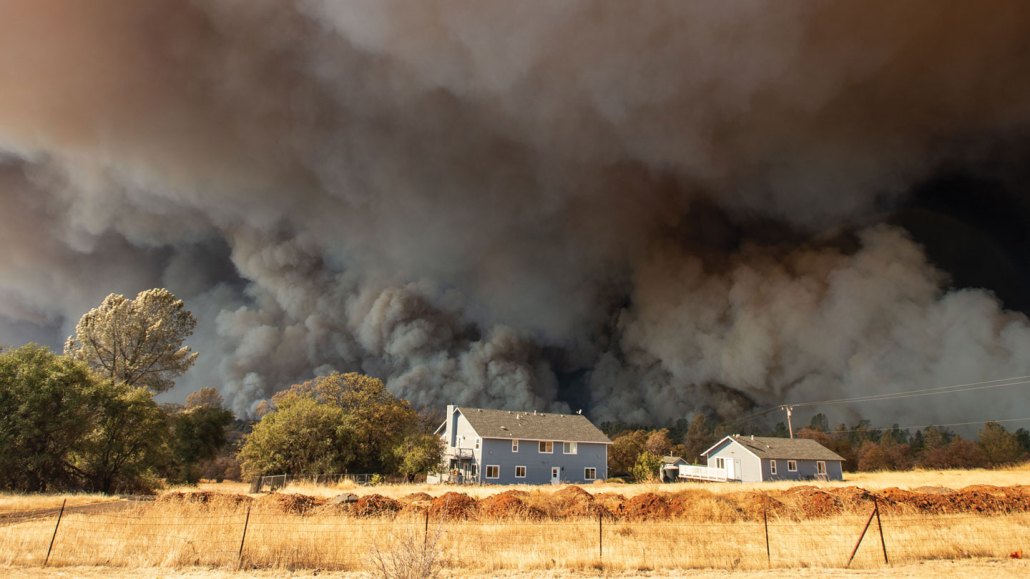Questions for ‘Western wildfire smoke poses health risks from coast to coast’

Western wildfires, like this 2018 Camp Fire in Paradise, Calif., devastate local communities. Their smoke also travels to cities out East. Researchers are beginning to study the health effects for people far downwind of the fires.
Josh Edelson/AFP via Getty Images
Share this:
- Share via email (Opens in new window) Email
- Click to share on Facebook (Opens in new window) Facebook
- Click to share on X (Opens in new window) X
- Click to share on Pinterest (Opens in new window) Pinterest
- Click to share on Reddit (Opens in new window) Reddit
- Share to Google Classroom (Opens in new window) Google Classroom
- Click to print (Opens in new window) Print
To accompany ‘Western wildfire smoke poses health risks from coast to coast’
SCIENCE
Before Reading:
- What do you think of when you hear “air pollution?” List three potential sources of air pollution.
- Imagine you live in a city that closely regulates emissions of air pollutants so that the city releases almost none. As a result, your city’s air quality is excellent. Then, one day, something changes. Your city has started experiencing mysterious air pollution problems. And it worsens until you sometimes need to wear a mask to go outside! What might have caused this change? Describe a situation where distant factors could pollute the air inside a city.
- Examine a map of the United States. Identify both the “East Coast” and the “West Coast.” Particular winds that blow from west to east are known as “prevailing westerlies.” They greatly affect weather conditions throughout much of the United States. What impact might prevailing westerlies have on the transfer of air pollution from one coast to another?
During Reading:
- Where do most of the large North American wildfires occur? Where does much of the smoke from these wildfires tend to travel?
- What are aerosols? What is the connection between aerosols and particulate matter? Which would likely remain in the air longer: particulate matter composed of big pieces or small pieces?
- What is “especially worrisome” about the particulate matter known as PM2.5? To what does the “2.5” part of that name refer?
- How has climate change been affecting the intensity and frequency of wildfires?
- Studies show that in the Pacific Northwest, wildfire smoke — especially PM2.5 — tends to be highest in August. According to Rebecca Buchholz, what’s the likely cause for this August peak?
- Data from 2006 to 2018 shows that three in every four asthma-related ER visits, hospitalization and deaths that had been triggered by wildfire smoke had occurred east of the Rocky Mountains rather than west. How might population differences between the East Coast and the West Coast explain this data?
- How did the toxicity of aerosols emitted by fires in South America’s Amazon forests compare to the toxicity of aerosols typically associated with city air pollution?
- What type of harm can be caused by chemicals known as “oxidants”?
- As smoke-related aerosols hang out in the atmosphere and age, do they tend to become more toxic or less? According to Nga Lee Ng, what is one possible explanation for this age-related change?
- According to Matthew Campen, what should future studies explore more regarding PM2.5?
After Reading:
- This study provides evidence that smoke-related aerosol pollution can lead to inflammation in the brain. List three health issues related to brain inflammation described in this story. Based on this evidence, how valid is the concern that children exposed to such pollution might wind up with effects that last into adulthood? How important do you think it is to find solutions for this problem? Use information from the article to support your answer.
- What is your favorite animal? What do you like about this animal? What is one way that aerosol pollution might affect this animal? Based on information from this story, is aerosol pollution more likely to affect this animal positively or negatively? Explain why you think that.